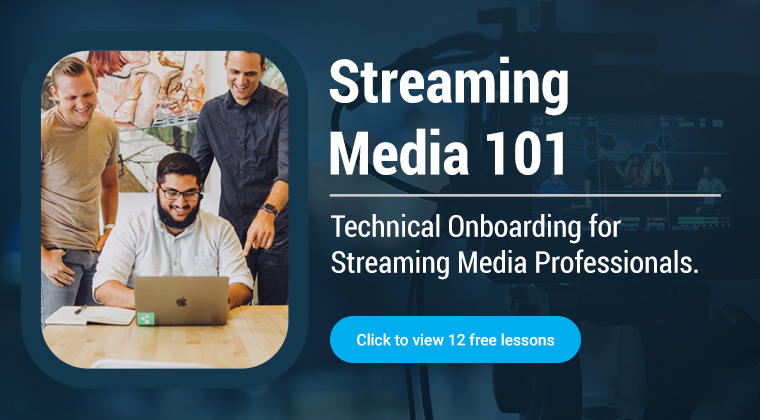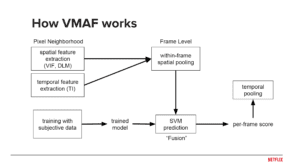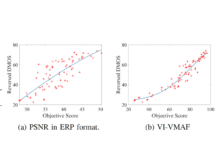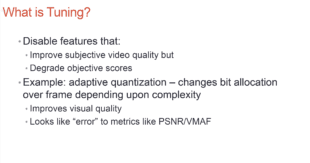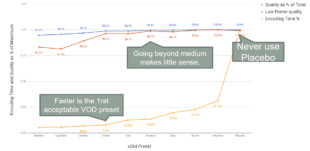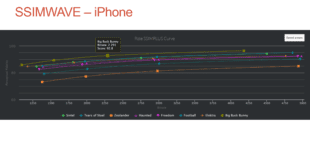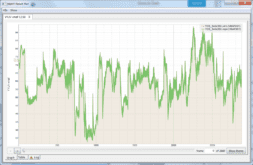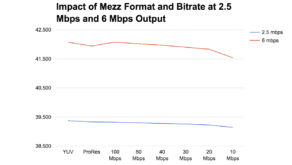A colleague asked for some resources relating to VMAF. Rather than answer in an email I thought I would create a post around it. Some of these are from Netflix, most from me (Jan Ozer). I’ve broken the items into three groups; Computing VMAF, Using VMAF, and About VMAF. I hope you find this collection useful. Computing VMAF My default way …
Read More »Voronoi-based Objective Quality Metrics for Omnidirectional Video
The Voronoi omnidirectional video metrics have the best correlation between test scores and subjective ratings than all measured 2D and 3D metrics according to its inventors. It’s an open-source metric you can download and learn to use below. I’ll be discussing the Voronoi metric in my upcoming talk on 2D and 3D video quality metrics at Streaming Media West and …
Read More »Compute VMAF Using FFmpeg on Windows
Author’s note: When this post was written, the Zeranoe FFmpeg Windows download didn’t include VMAF, so you had to either download this version or compile your own. Now the Zeranoe version does include VMAF support; all you need to do is download the models and run the correct command strings. To learn how to do this, check out the blog …
Read More »Preview Lesson: Tuning for Encoding When Measuring with Video Quality Metrics
I’m pulling together some materials for my pre-conference session at Streaming Media West (November 18-20 in Los Angeles) entitled Objective Quality Metrics 2D & 3D: What They Are, How To Compute Them, & How To Use Them. One lesson talks about “tuning” when encoding files to be measured with metrics like PSNR, VMAF, and SSIM. It’s a crucial issue to …
Read More »Choosing an x264 Preset
All codecs and encoding tools have a configuration option that controls the quality/encoding time tradeoff. With x264 (and x265) the preset controls that tradeoff. When choosing a preset you should consider 3 criteria: Overall quality – the overall quality produced by that preset Low frame quality – the quality of the lowest frame produced by that preset, which indicates the …
Read More »Here’s What I’m Teaching at Streaming Media West Next Month
Streaming Media West is coming up next month in the City of Los Angeles (as opposed to Huntington Beach where it’s been the last few years). Specifically, it’s at the Westin Bonaventure on November 19-20 (Tuesday/Wednesday) with pre-conference sessions on Monday the 18th. I’ll be my normal busy self with two pre-conference sessions and several presentations. Here are the dates, …
Read More »Creating a Unique Encoding Ladder for Smartphone Viewers
Many producers distribute the same encoding ladder to all viewers. However, sending a 1080p stream to smartphone viewers may be a waste of bandwidth as both SSIMPLUS and VMAF scores reveal that lower resolution, lower-bandwidth videos deliver similar quality at a lower cost. This tutorial, from my course Computing and Using Video Quality Metrics, shows you the tests I performed …
Read More »MSU VQMT Gets Auto-Scaling But Watch the Scaling Algorithm
One of the first operations I learned in FFmpeg was how to scale subsampled video files back to the source resolution to compute PSNR in the Moscow State University (MSU) Video Quality Measurement Tool (VQMT). Thankfully, for those not familiar with FFmpeg, as of VQMT version 11.1, this operation is no longer necessary. Yup, VQMT can now autoscale your lower-resolution …
Read More »The Evolving Encoding Ladder: What You Need to Know
This article discusses the evolution of the encoding ladder from the fixed ladder presented by Apple in Tech Note TN2224 to context-aware-encoding, which creates a ladder that not only considers the encoding complexity of the content, but also the producer’s QoE and QoS metrics. The encoding ladder embodies the most significant encoding decisions made by encoding professionals, and understanding this …
Read More »Choosing the Data Rate for your Mezzanine Files
(Note: This article was amended to show the comparative results at 6 mbps) Summary (The MPD) As more and more producers move their encoding to the cloud, or distributing via OVPs or other service providers, the data rate for the mezzanine files is significant factor for upload time and bandwidth and storage costs. The big question is, how much extra …
Read More » Streaming Learning Center Where Streaming Professionals Learn to Excel
Streaming Learning Center Where Streaming Professionals Learn to Excel

